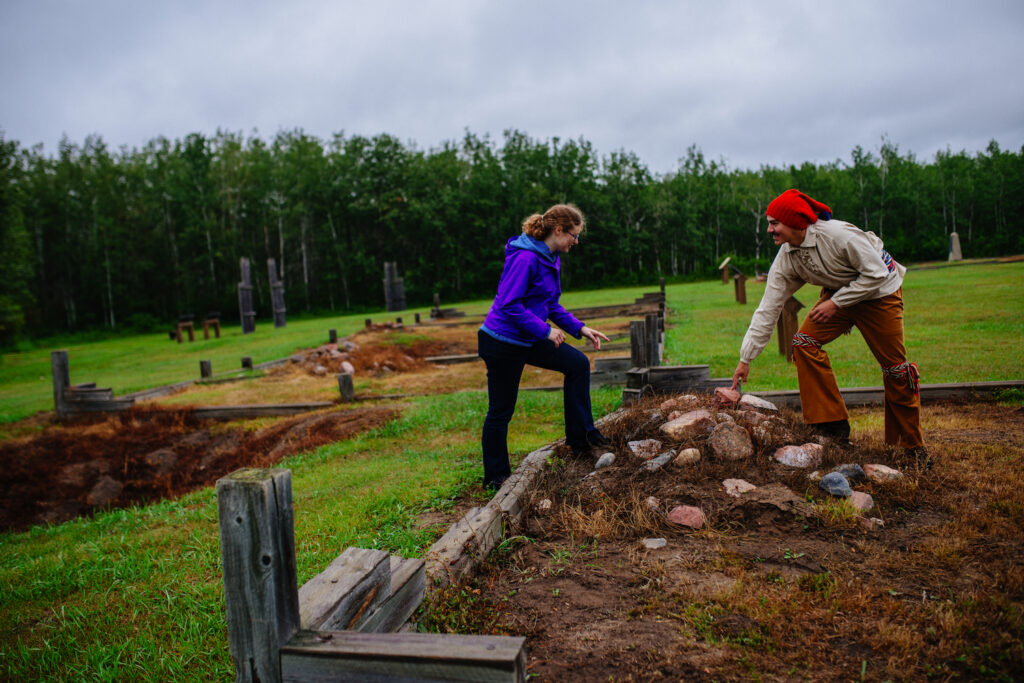In the 1790’s two competing fur trading posts were built almost side by side high on the banks of the North Saskatchewan River. Established before Fort Edmonton and part of an intense continent-wide race for furs, these forts were on the very leading edge of the fur trade as it moved westward.
Today our modern interpretive centre tells the story of trappers, traders, and native women living in or trading with the forts. While the forts themselves are long gone, today you can stand where the forts once stood and imagine what life was like over 220 years ago.
We offer guided interpretive tours of both the interpretive centre and the archaeological sites. Tours take about 1 ½ hours and include a beautiful walk through our aspen parkland landscape. We have fully accessible washrooms, displays and a viewing platform in the interpretive centre with more limited access to the fort sites.

The year is 1792. The place is a high bank alongside the North Saskatchewan River. Plentiful furs for trade can be trapped here, and many bison can be hunted to make pemmican, the staple food. A great many Indigenous people called this place home. Into this ideal place came the Northwest Company who built Fort George, and the Hudson’s Bay Company who built the competing Buckingham House.
Located only 500 meters apart, these two forts competed for customers and helped each other in times of need while collecting furs and stockpiling provisions. Whether you come with a passion for history or a desire to make great family memories, you will be intrigued by the stories of the Indigenous people who lived here and the two fur trade forts they traded with. Take a guided walk on a winding trail through the aspen forest. Stand where the forts once stood & where history actually happened.
